On the Road is a weekday feature spotlighting reader photo submissions.
From the exotic to the familiar, whether you’re traveling or in your own backyard, we would love to see the world through your eyes.
On the Road: Week of June 21 (5 am)
Albatrossity – Spring 2021 in Flyover Country #5
JanieM – China, Part 6 of 8
?BillinGlendaleCA – Milky Way in the Owens Valley
arrieve – The Galapagos, part 2
arrieve – The Galapagos, part 3Paris in the Springtime: Week of June 21 (10 pm)
MollyS – Monet’s gardens at Giverny, the water garden and house
randy khan – Springtime in Paris – Canal St. Martin
randy khan – Springtime in Paris – Floating along the Seine
way2blue – Paris in June
way2blue – *Limeuil, France In JuneInspired by the photos of Paris / France? Send in your photos.
*A bit of poetic license this time around for “Paris”.
? And now, back to Albatrossity.
Albatrossity
Week 5 of Spring in Flyover County features some colorful birds, and some of them have attitude!
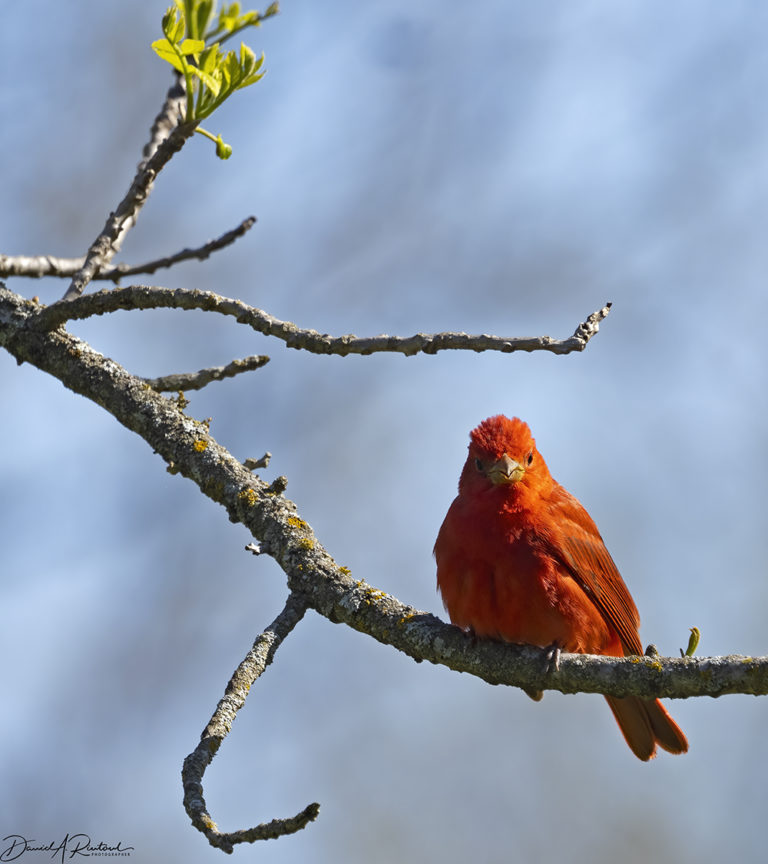
Summer Tanagers (Piranga rubra) are welcome returnees, particularly around the yard. They are not only colorful, but useful. We have a lot of paper wasps who like to build nests in various places under the eaves and deck, and this species specializes in catching bees and wasps. If you are a beekeeper, they might not be in your top ten list of favorite birds, but I love ’em.
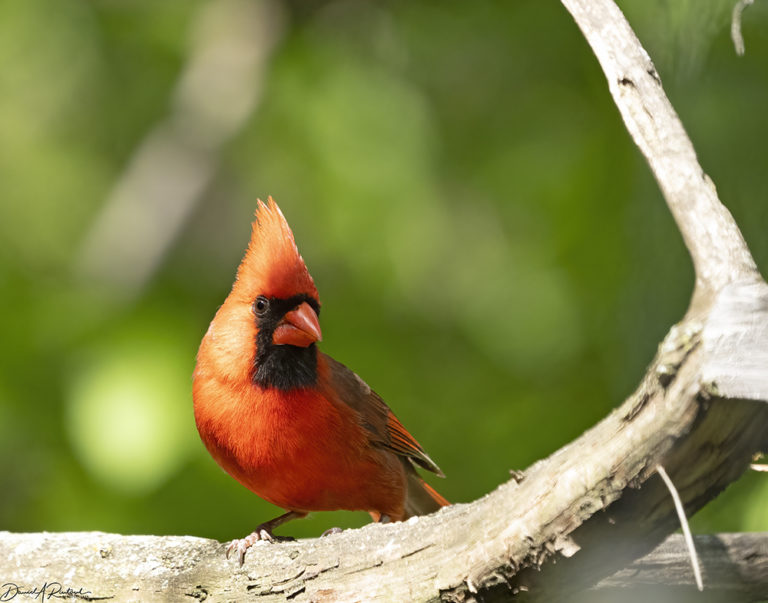
Our other flaming red yard bird is this male Northern Cardinal (Cardinalis cardinalis). He seems especially vibrant this year, so he gets to have his portrait posted on Balloon-Juice.
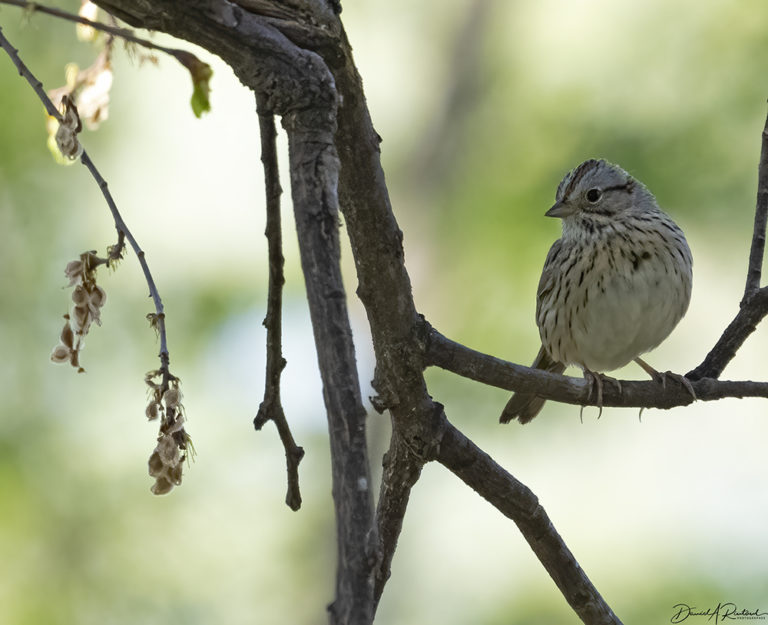
Migrant sparrows in the spring spend a lot of time here feeding in the elm trees. Lincoln’s Sparrow (Melospiza lincolnii), normally a secretive species, can often be found chowing down in the elms in the neighborhood. These birds don’t stay here for the summer, so this one was undoubtedly fueling up for the next leg of its trip to Canada or Alaska.
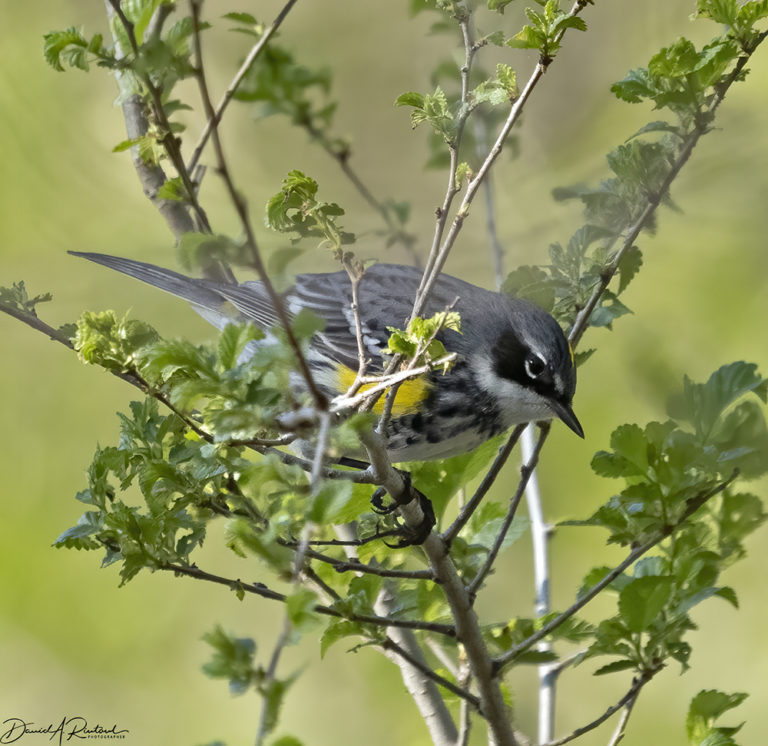
Yellow-rumped Warblers (Setophaga coronata) are typically common here in the winter; they are one of a few warbler species who can survive on a diet of berries and fruits for a while. This winter we had very few, and the deep freeze in February probably wiped out most of those. So spring migrants, like this spiffy male, are a welcome sight!
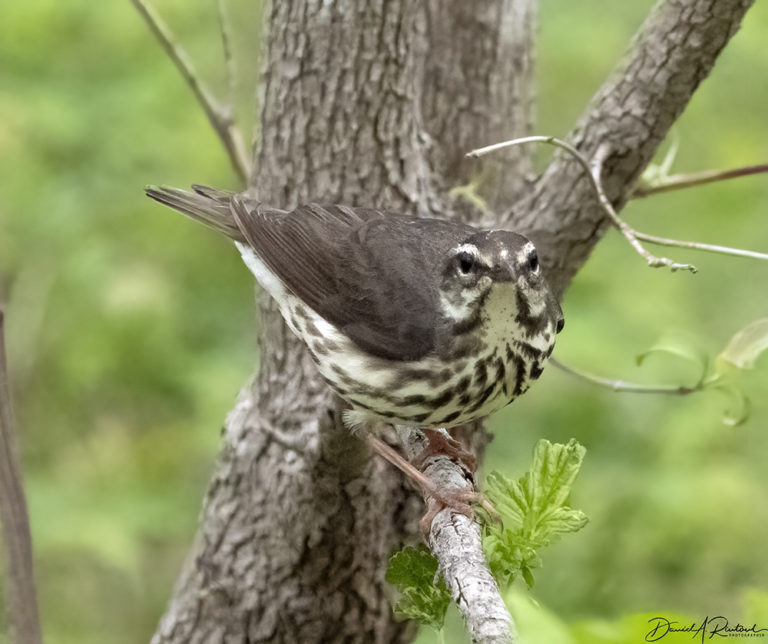
Returning to the streamsides and springs every spring, the Louisiana Waterthrushes (Parkesia motacilla) are also welcomed back. Their cheery songs give them away well before they are seen, but if you can see one, their tail-bobbing habits are fun to watch as well!
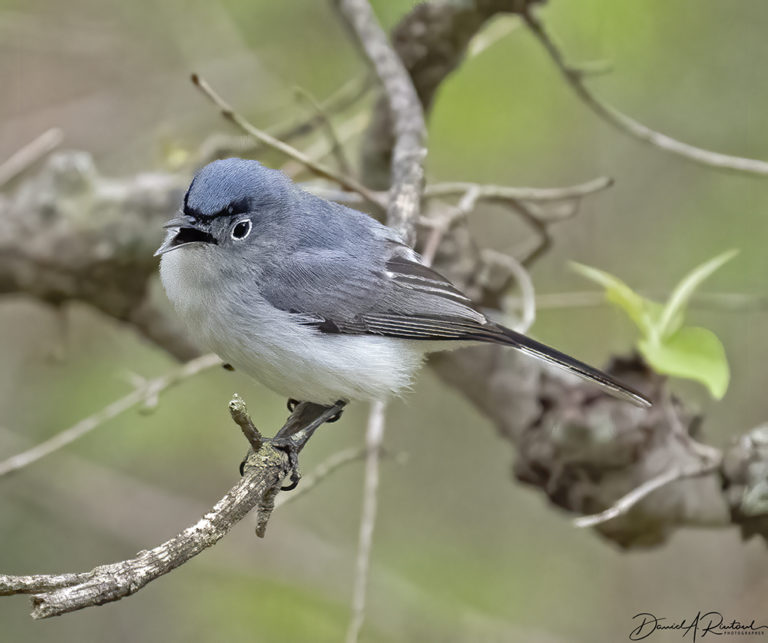
Blue-gray Gnatcatchers (Polioptila caerulea) are adorable little fluffballs who have the amazing ability to look grumpy and cute at the same time. This male (identifiable as such because of his rugged black unibrow) is practicing his best grumpy look.
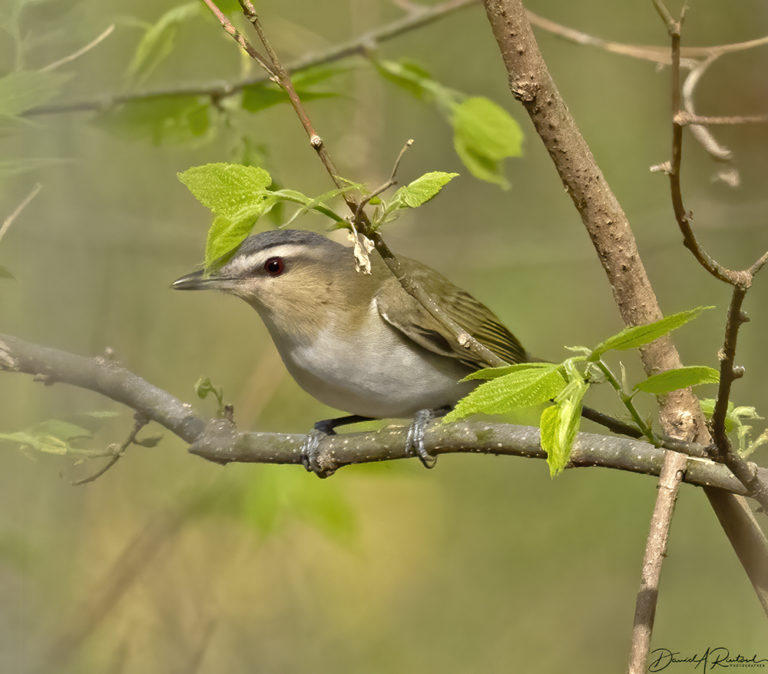
Back from a winter in the Amazon Basin, this Red-eyed Vireo (Vireo olivaceus) fills the back woods with song as soon as he returns. The song is familiar to most birders in the Eastern US, because they are one of the few species who continue to sing even during the hot parts of a summer day. They can be hard to see, but just about every woodlot in the eastern part of the continent will host a pair of these birds.
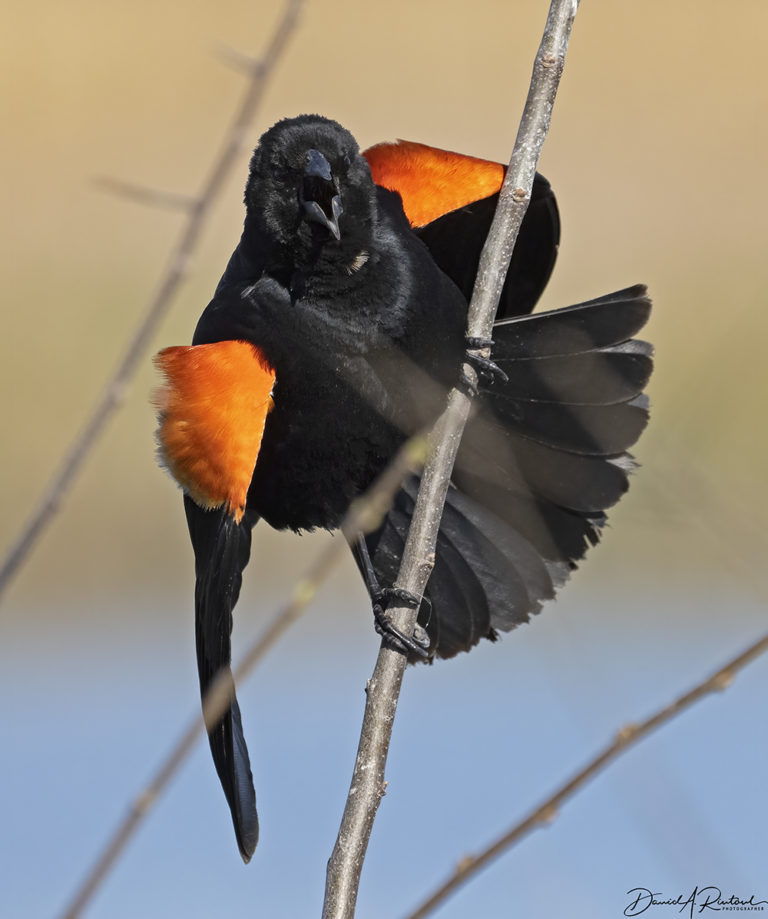
Spring is also a great time to head out to the nearest wetland wildlife refuge. In my case that requires a 2.5 hour drive to Quivira National Wildlife Refuge in central KS, but it is worth the trip. This studly male Red-winged Blackbird (Agelaius phoeniceus) was there to greet me when I arrived!
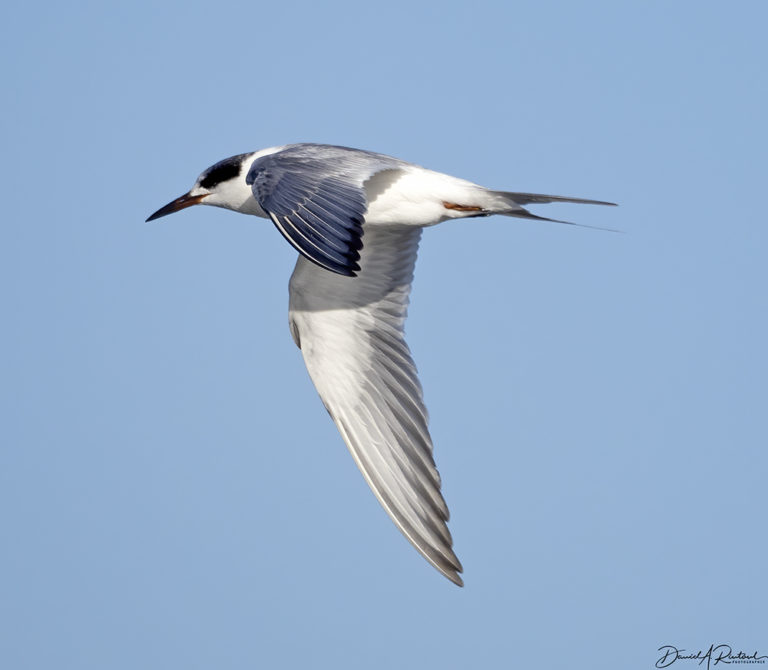
Marshes are also great places to practice taking photos of birds in flight, like this Forster’s Tern (Sterna forsteri). They zigzag back and forth across the water, in a relatively predictable way, and if the light is good, you can usually get some good shots.
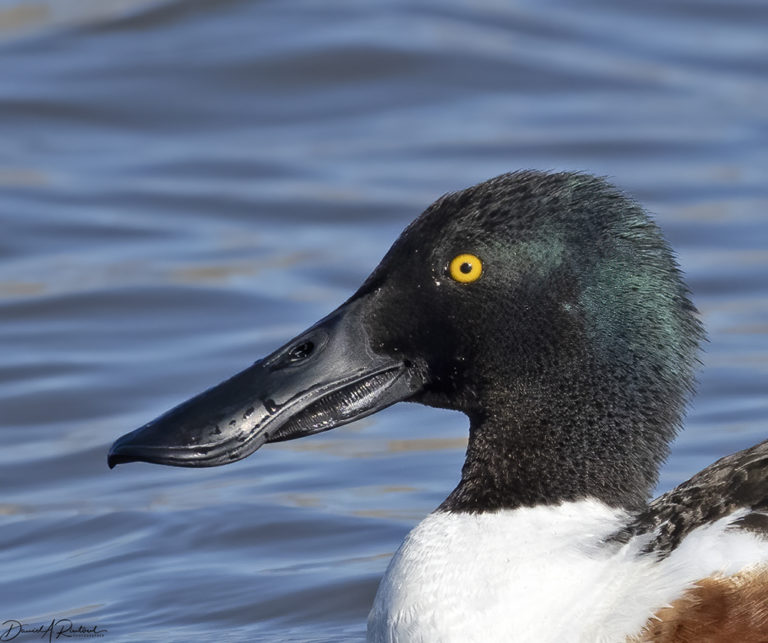
Ducks are another excellent attraction of your local wetland refuge. The striking nuptial plumages of the males means that most ducks are easy to identify, and fun to photograph. This drake Northern Shoveler (Spatula clypeata) has a truly funky bill as an additional photographic attraction. I’m sure he makes the lady shovelers swoon!

J R in WV
Nothing is dressier looking nor flashier than a Red-Winged Blackbird — what a great portrait of that bad boy. We have them around here in places that have big fields, alas our wooded hillsides don’t appear to appeal to them. We do have some flashy birbs, and love to visit the next door neighbors who have lots of feeders which attract the flashy birds.
Thanks again for sharing your beauty with us!
Mary G
Thank you for the usual excellent photos of birds and their personalities. You and Betty C. have gotten me into birds now.
The only ones I used to pay attention to were pelicans, because they were such a success story here in avoiding extinction after DDT was banned, and it’s so exciting when they divebomb straight down into the water and come up with a fish.
There was a beautiful bright yellow bird with a black spot on his head and black wings in my neighbor’s tree yesterday, and as far as I can tell, it was an American goldfinch. I was unable to get a good photo with my low rent phone, but it was exciting to see a new birb without leaving home.
J R in WV
@Mary G:
It is really exciting sometimes to have a bird show up right by your home.
Very recently a Barred Owl landed on a branch just outside our kitchen solarium, wife called to me. I was able to take some pictures which I will send in soon. He was really close!
The pics are a little fuzzy from shooting through a not-that-clean window, but you can see him pretty well. I can probably clean things up a little bit in the edit process.
I worry about the cats prowling outside late at night, as these owls are big enough to take a house cat. On the other hand, the cats are pretty stealthy, and I imagine the owls have other prey not as dangerous as our cats, who are predators themselves. Like the chihuahua ranch down the road a bit…
Reboot
Love cardinals! I see them here in SW Virginia now and then. As a transplant from the Florida east coast, I miss the variety of birds I used to see, so I always look forward to Albatrossity’s posts. (And feel like I’m learning something.)
Albatrossity
@J R in WV: Those Barred Owls LOOK big enough to take a house cat, but they really aren’t a danger to any cat beyond the size of a small kitten. Most raptors can haul off something at or less than half their weight. A Barred Owl, being all feathers, weighs in at a whopping two pounds. You can do the math. Yeah, it is possible that a very desperate and starved owl might try to take a cat, but frankly, I’d bet on the cat in that encounter.
Coyotes, feral dogs, bobcats, and vehicles are a much greater danger to any cat who is allowed to wander outdoors at night.
JanieM
Thanks Albatrossity, another great set to start off the day, and the week, with some cheer.
I stopped next to a pond last night to take some pictures, and my presence was a great affront to a couple of red-wings in the vicinity. They squawked so much I felt like I should apologize for making them expend so much energy. On the other hand, if they could have understood the apology they would also have understood that I was only there to take pictures, and intended no harm.
arrieve
Beautiful as always, Albatrossity. I especially love the red-winged blackbird — he was really posing for you!
There’s a barred owl who’s been hanging out in Central Park for the past couple of months — known as Barry, although it’s a female — but I haven’t managed to see her yet. She’s become quite a celebrity; as I was walking out of the Ramble (the unmanicured section of the park north of the lake where the birders congregate) on my last visit, three people asked me if Barry was around.
Ken
The Lincoln sparrow appears in Footing it in Franconia by Bradford Torrey (which I proofread for Project Gutenberg Distributed Proofreaders):
dnfree
I love your bird pictures and stories and share them with my husband, who is the real birdwatcher in the family.
Where we live now (northwest suburbs of Chicago) there are a lot of Sandhill cranes because of retention ponds. One pair spent the winter here with a young bird that was probably too young to migrate. There aren’t as many this year because we’re in a drought, but there is a pair that had two babies. One of the babies was snatched by a coyote early on, but the parents and remaining “colt” visit our bird feeder and birdbath.
Yesterday one of the adult birds snatched a fledgling robin right out of the air as it flew by at a low altitude and speed. He dropped the struggling robin on the ground to stab it, but on instinct I chased the crane off. The robin couldn’t be saved, however.
The red-winged blackbirds fly at the cranes and try to drive them off. I presume their nests are in danger too.
Embra
David, your photos always bring me joy. I thank you for taking them and sharing them.
way2blue
Terns! I just returned from a couple weeks in Baja Sur (first time on a plane in a year & half), where we were perched on the sea cliff above a fresh water lagoon (Laguna La Poza), and each evening at sundown about a hundred terns would show up & zig zag just above the surface of the lagoon. Presumably feasting on freshly hatched critters. Really fun to watch. (I did take a short video, but they all look like dots… )
Gravenstone
@dnfree: Over the last couple of weeks, we have had a unique crane visitor frequenting the fire retention pond near my building at work. Sandhill crane that somewhere along the way lost his lower left leg (looks to be about midway between joints). You’d never notice it unless he lifts the damaged leg.
J R in WV
@Albatrossity:
Our barred owls can typically take a yard bird chicken,or even a guinea hen. “Allow” the cats outside!?! The cats are in charge on this farm. The last birb they caught committed suicide by window impact. 12:1 or more rodents to birbs.
They do a great job, we have never had a rodent inside. That may partly be because of the black snakes, we have black pine snakes, king snakes, and collared snakes. No copperheads here, the black snakes predate on them, yay!
I’ve seen a King Snake that climbed up the crevasses in the bark of an old giant tree and was waiting patiently at a wood pecker hole for whoever passed through the opening the next time. We were building a fence line across the back of the farm and sat there watching him for our lunch break. He was huge, motionless, lurking for his own lunch, a perfect predator.
WE keep to larger dogs because of the coyotes. The cats are pretty sly, we’ve only lost one to a coyote in 40+ years…
A woman from anywhere (formerly Mohagan)
Fabulous photos as usual. Thank you! Our small pond hosts quite a number of RW Blackbirds, and this time of year, they OWN it and determinedly drive off pretty much anyone else, certainly the CA Towhees and the CA quail, not to mention ravens. The flamboyance of the red epaulets amazes me sometimes.
Albatrossity
“Our barred owls can typically take a yard bird chicken,or even a guinea hen.”
Have you witnessed this, or do they just disappear in the night?
mvr
Thanks for this and for the ongoing series. Nothing too exciting here in our backyard in Lincoln, but the usual suspects are holding steady and we hear some unfamiliar calls as our sour cherries are ripe now. Was in Yellowstone last week and saw several pairs of Sandhill Cranes, as well as Bald Eagles and Osprey. I think I kept hearing but not seeing wrens of some sort, but I may be wrong. In Southern WY mountains, the Cordelleran Flycatcher is back though not nesting on the cabin so far as I can tell, and I think I heard Western Tanagers. Also lots of hummingbirds. And Robins. There are so many robins in the mountains!
BigJimSlade
@Albatrossity:Hey, Albatrossity! Great set!
The 4th one is fantastic, though after reading the name of the bird, I think we’re seeing the wrong end.